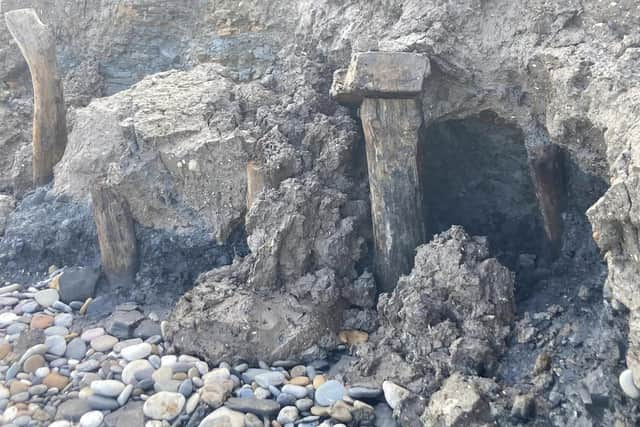Coastal erosion exposes remains of 19th-century mine workings in cliffs on Yorkshire beach
and live on Freeview channel 276
Terri-Leigh Broadhead was walking between Reighton Sands and Speeton, near Filey, with her father when they spotted the wooden posts embedded into the rock.
They were later identified as tunnel supports dating from a period when Speeton’s cliffs were heavily mined for mineral extraction.
Advertisement
Hide AdAdvertisement
Hide AdTrevor Brigham responded to Ms Broadhead’s request for information and first believed the workings were associated with Speeton clay, which was mined in the early 1800s to make Roman cement. A boat landed on the beach and took shipments away to a cement works on the Humber.


However, after further research he decided they were more likely to be the remains of another industry, the extraction of fossilised animal remains – essentially, dinosaur faeces - where were also taken to Hull and crushed to create phosphate manure. The pebbles were known as ‘coprolites’ and Mr Brigham found a report dated 1868 which made reference to timbered ‘adits’ being driven into the cliff below the cement bed. Small wagons running on tramways were used to remove the material and it was then sent to Hull by rail from Speeton Station, which opened in 1847 on the Scarborough to Hull line and closed in 1970.
The industry developed after the Napoleonic Wars, when the country’s food supply needed to increase in line with the population and demand for fertiliser rose. Towards the end of the Victorian period, international competition sent the mines into decline, but there was a revival during World War One when imports were reduced.
